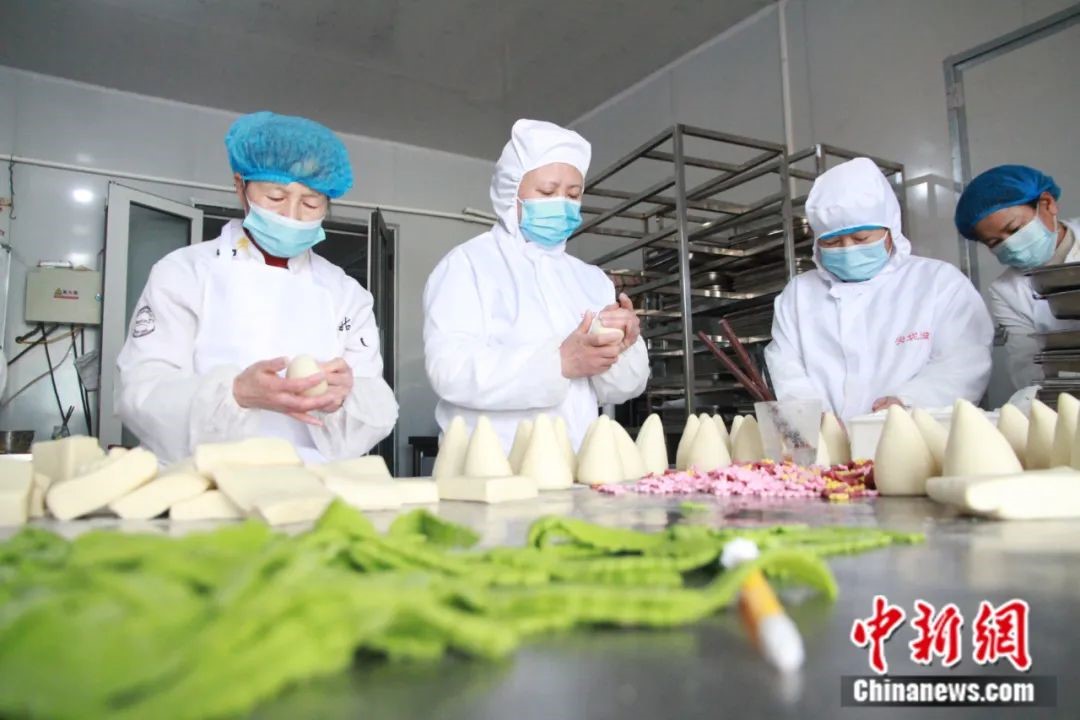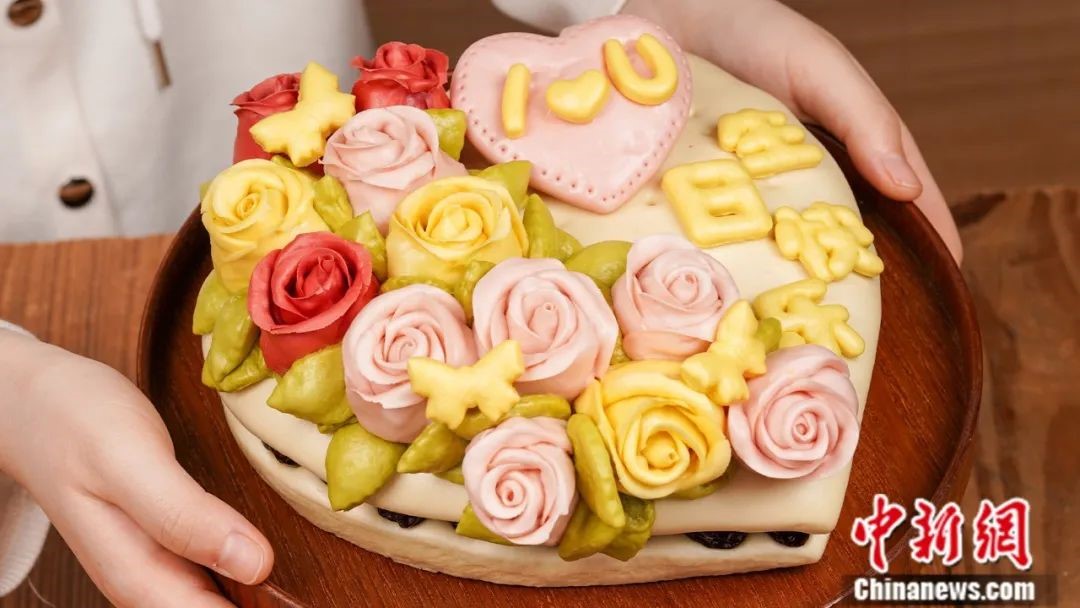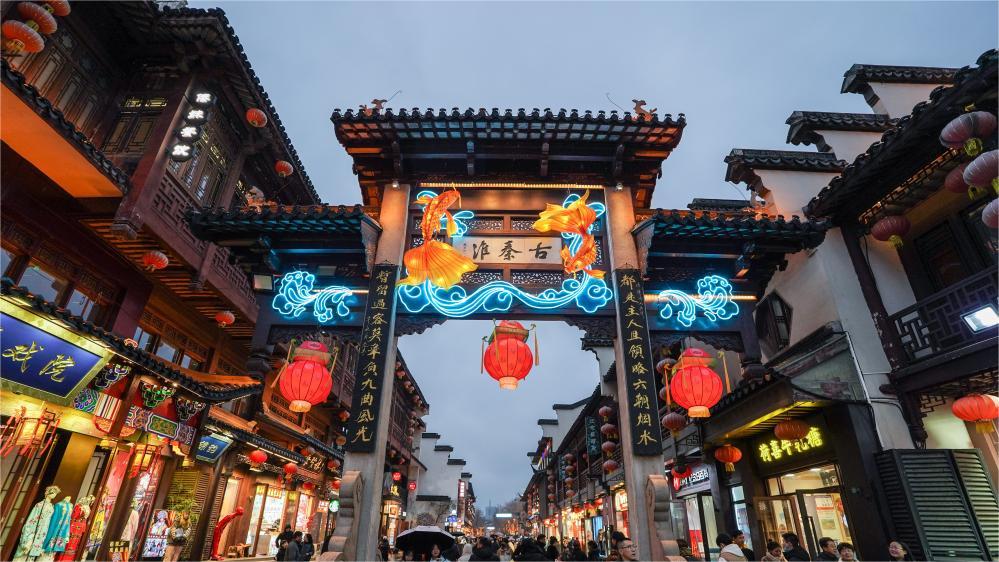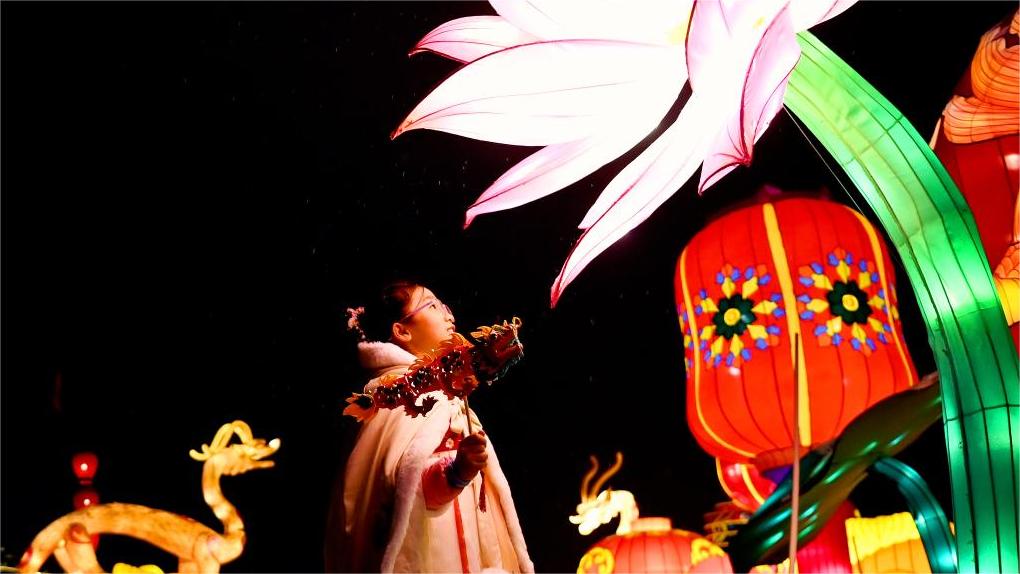Centuries-old bun-making craft turns dough into 'gold' in E China's Shandong

Photo shows huabobo, a type of steamed bun with colorful patterns and various shapes, at a workshop in Wanggezhuang subdistrict, Laoshan district, Qingdao city, east China's Shandong Province. (Photo/Wang Yuxuan)
With the Chinese Lunar New Year, or Spring Festival, approaching, the smell of steaming buns fills the icy winter air in Wanggezhuang subdistrict, Laoshan district, Qingdao city, east China's Shandong Province.
Local workshops are bustling with orders for Wanggezhuang's characteristic steamed buns, notable for their large size and exquisite appearances.
Wanggezhuang, a well-known fishing port at the foot of Laoshan Mountain, China's highest coastal mountain, is famous for its traditional craft of making giant steamed buns, despite the fact that no wheat is grown here.
Owing to their large sizes, unique tastes, and innovative appearances, the giant steamed buns from Wanggezhuang, with a history dating back about 500 years, have gained widespread popularity across China and have attracted international attention.
The signature feature of Wanggezhuang's steamed buns is their exceptionally large size. Each bun weighs between 0.25 kilograms (about half a pound) and 1.5 kilograms (over 3 pounds), with sizes ranging from that of a bowl's mouth to a washbasin.

The workshop manager of a steamed bun business in Wanggezhuang subdistrict, Laoshan district, Qingdao, east China's Shandong Province, displays a rabbit-shaped steamed bun. (Photo/Wang Yuxuan)
The secret to the unique taste of these buns lies in the use of high-quality flour, pure spring water from Laoshan Mountain, a hand-kneading process, and cooking in an iron pot over a wood fire, according to Yu Qian, owner of a steamed bun store in the locality.
The artisanal process involves kneading the dough, allowing it to rise properly, then steaming and baking it in iron pots over a wood fire. This method gives the buns a distinctive golden crust on the bottom, known as the "golden bottom," a unique feature of Wanggezhuang's steamed buns.
The traditional craft of making steamed buns has become a significant driver of local economic development in Wanggezhuang, turning into a key industry that employs more than 5,000 women in a population of less than 50,000.
By the end of 2023, Wanggezhuang had developed a substantial industrial cluster with over 160 businesses dedicated to making steamed buns. These businesses use more than 400,000 bags of flour each year.

Workers mix natural fruit and vegetable powder with flour to make colorful steamed buns in a workshop in Wanggezhuang subdistrict, Laoshan district, Qingdao city, east China's Shandong Province. (Photo/Wang Yuxuan)
Last year, this industry produced nearly 14,400 tonnes of steamed buns, generating an output value of about 120 million yuan ($17 million).
Yu Qian's success story highlights the industry's vital role in local economic growth. A decade ago, she faced crippling debts of 800,000 yuan. Inspired by childhood memories of her grandmother making steamed buns and encouraged by fellow villagers, she decided to start her own business. Within just a year and a half, her venture was successful. She has not only cleared her debts but now enjoys annual revenues of 2 to 3 million yuan.
With favorable government policies and strong support from local authorities, the industry has become one of the most prominent in Qingdao and even in Shandong Province, gaining influence by the day.
In addition to regular steamed buns, huamomo or huabobo, a variety of steamed buns featuring colorful patterns and diverse shapes, also boasts a long history in Wanggezhuang subdistrict.
Steamed buns of various kinds are often essential at important events in Wanggezhuang, such as weddings and birthdays.
With a keen understanding of market demands and trends, many steamed bun businesses in Wanggezhuang have continually innovated their products' shapes to appeal to a broader audience.
A workshop manager at a local business has cleverly incorporated elements of Guochao, a fashion trend that blends modern designs with traditional Chinese cultural elements, into the design of steamed buns. This innovation has resulted in new, attractive types of steamed buns offered at affordable prices.
The Guochao elements incorporated by her team include Chinese zodiac animals, lucky bags, lion dances, and koi fish.
One particularly striking design created by the manager's team features a large steamed bun with eight "golden ingots" inside, symbolizing fortune and good luck.
In response to consumers' increasing focus on the nutritional value of food and health, her team has replaced traditional food coloring with natural fruit and vegetable powders.
Moreover, the team has shifted its marketing focus to online platforms, effectively broadening sales channels, reducing operating costs, and enhancing efficiency.

Photo shows a custom-made birthday steamed bun from a workshop in Wanggezhuang subdistrict, Laoshan district, Qingdao city, east China's Shandong Province. (Photo courtesy of the Wanggezhuang subdistrict office)
Currently, more than 90 percent of the team's orders are received through online platforms, as reported by the manager.
Many other local steamed bun businesses have also turned to e-commerce platforms to support their growth and extend their market reach. Local authorities have vigorously promoted the use of e-commerce to increase the popularity of steamed buns in recent years.
Training in e-commerce livestreaming skills, provided by the local government, has benefited more than 70 steamed bun businesses.
Efforts by local authorities to promote the integration of the steamed bun industry with local tourism and culture have provided a new boost to the economic development of Wanggezhuang.
A steamed bun-making contest, steamed bun-related cultural brands, creative, and tourism products, WeChat memes featuring steamed buns, and various promotional activities have further fueled the growth of the thriving steamed bun industry in Wanggezhuang.
With 2024 being the Year of the Dragon according to the Chinese lunar calendar, dragon-shaped steamed buns are particularly popular among consumers.
Meanwhile, steamed buns in other shapes that convey auspicious meanings, such as longevity peaches, gold padlocks, and tigers, are also in high demand as people across the country prepare for the upcoming Spring Festival.
These iconic buns, filled with modern creativity and artistry, are expected to continue driving the local economy while adding a special touch to the dining tables of families nationwide.
Photos
Related Stories
- Splendid lanterns illuminate Baotu Spring in Shandong
- Tourists visit Mount Tai scenic area in east China's Shandong
- Qingdao in E China's Shandong province moves towards higher end of home appliance industry
- China's Shandong sets GDP growth target of over 5 pct for 2024
- Installed capacitiy of new energy surges in east China's Shandong
Copyright © 2024 People's Daily Online. All Rights Reserved.









